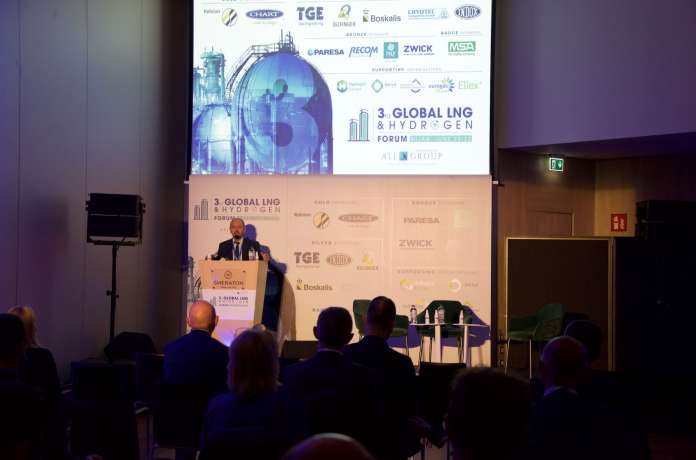Liquefied Natural Gas (LNG) has a vital role to play in Europe’s energy transition. That’s what emerged after a day of talks at the 3rd LNG and Hydrogen Forum, organised by ALJ Group in Milan.
As underlined by James Watson, Secretary General of Eurogas, while the global LNG demand grew by 12.5 per cent in 2019, Europe is increasing the quantity of LNG it imports and is building the accompanying infrastructure that is needed to deliver its benefits, including those new terminals in Central and Eastern European countries like Greece and Croatia.
Especially important will be for those countries like Poland, Greece or Bulgaria which are phasing out coal and need a reliable alternative in the short term.
“Today, while implementing the European Green Deal, let us always remember: clean energy transition towards EU’s climate neutrality in 2050 is essential, but it must not be at the cost of energy security,” said MEP Jerzy Buzek, Member of the European Parliament, President of the European Parliament, Prime Minister of Poland, quoted in Eurogas’ newsletter.
“We need greater acknowledgement that for some Member States the path to decarbonisation will require a short-term increase in the consumption of natural gas,” he said.
On the horizon, Mr Watson sees a hydrogen economy that can be powered with cleaner molecules as emerging technologies come online.
The European Commission is indeed looking at a huge hydrogen development between 2030 and 2050. However, this scenario puts a very strong emphasis on renewable electrification which comes at higher costs and that takes into account resources that currently might be scarce.
“Natural gas is going to be needed, in a different way: producing hydrogen,” said Mr Watson. In this regard, Eurogas is modelling a scenario that is cheaper and cost-effective.
“By 2030 manufacturing will be one of the main sectors to make use of hydrogen, by 2050 it will be manufacturing and the building sector,” he continued. “The hydrogen economy we need will come partly from renewables and partly from natural gas. After all, it is much more affordable to decarbonise the manufacturing sector using hydrogen than electricity.”
So where does the fate of LNG lie? Still, it will be used to decarbonise the building and heating sectors, especially in countries in CEE as it can save up to 10 trillion euros compared to electrification.
“And we already see very strong commitments coming from governments, from Portugal to Poland alike,” Mr Watson concluded, citing the Polish plan of installing 2 gigawatts (GW) of electrolysers by 2030 as an example.
Despite each country and region being different, with different social and economic needs, they are all after the same priorities: energy affordability, security and safety.
“This is what gases and the gas infrastructure can do,” said Roxana Caliminte, Deputy Secretary General of Gas Infrastructure Europe (GIE).
GIE, together with DNV GL, have identified a series of possible pathways for decarbonisation and liquified natural gas has a role to play in all of them. Either looking at the production of bio LNG which comes with zero investments as the storage system is the same in use today. Or by producing synthetic LNG which is a combination of green hydrogen and CO2.
“Again, we can use the same existing gas infrastructure we have, so we don’t need changes, additional financing or specific policies,” Mrs Caliminte said.
The second pathway focuses on producing low carbon hydrogen with carbon capture and storage (CCS). According to GIE, this pathway is the one that can become the most competitive. Plus, it includes a positive use of carbon to produce synthetic LNG. The other technology mentioned by GIE is pyrolysis. However, it comes with the challenge of a proper user market for solid black carbon, which is not an option for those countries that do not have a CCS availability.
“We don’t need new LNG-specific policies but we need a full hydrogen strategy to coordinate the downstream production,” she concluded.




